biotechrabbit CAPITAL™ qRT-PCR Green Mix allows sensitive and specific cDNA synthesis and qPCR in a single tube for quantifying mRNA, total RNA and viral RNA sequences. Extremely low-copy-number targets can be detected with high efficiency over several logs of template concentration.
CAPITAL qRT-PCR Green Mix uses proprietary reverse transcriptase technology and buffer chemistry for efficient cDNA synthesis and QPCR in a single tube. To enable the use of the kit on qPCR platforms with different reference dye concentration requirements, three kit formats are available: a one-step kit containing no ROX, as well as LRox and HRox versions containing ROX in the corresponding concentratios.
Info: Recommended annealing temperature is 2°C above primer Tm (use gradient PCR to optimize the annealing temperature).
Component | Composition |
CAPITAL qPCR Green Mix (1step) | Optimized 4× qPCR Green Master Mix for One Step qRT-PCR |
LRox / HRox mix | Rox incorporated in the mix in low / high concentration |
RTase with RNase Inhibitor | Proprietary 20× Reverse transcriptase in a mix with efficient Ribonuclease Inhibitor |
STORAGE | −20°C (until expiry date – see product label). |
Quality Control
Functional assay
Mix tested functionally in QRT-PCR.
ROX reference dye
- See PCR cycler instruction for recommended concentration of ROX passive reference dye.
Notes
- For efficient amplification under fast cycling conditions use amplicon lengths between 80 bp and 200 bp.
- The shorter the amplicon length the faster the reaction can be cycled. Use maximum 400 bp amplicons.
- Primers should have a predicted melting temperature of around 60°C, using default Primer 3 settings (http://frodo.wi.mit.edu/primer3/).
Prevention of reaction contamination
RNase contamination is an exceptional concern when working with RNA. RNase A, providing most threat to RNA integrity, is a highly stable contaminant of any laboratory. To prevent RNA from degradation and to minimize possibility of contamination One Step RT-PCR; follow the guidelines below:
- Use separate clean areas for preparation of the samples and the reaction mixture.
- DEPC-treat all tubes and pipette tips or use certified nuclease-free labware with aerosol filters.
- Wear fresh gloves when handling RNA and all reagents.
- Always assess the integrity of RNA prior to RT-PCR in denaturing agarose gel electrophoresis.
- Use only water and reagents that are free of DNA, DNases and RNases.
- With every One Step RT-PCR setup, perform a contamination control reaction without template DNA.
Basic Protocol
- Keep the master mix protected from light until you use it.
- Aliquot the master mix to minimize freeze-thaw cycles and light exposure.
- Thaw on ice and mix very well all reagents. Assemble and keep all reactions on ice.
- Use only high quality optically clear reaction plates and seals designed for fluorescence applications.
- Do not use corner wells or use a more robust seal.
- Reserve plate positions for positive (control DNA) and negative (water or buffer) controls.
- First pipette the primer mixture, then add the template and last the Master Mix.
- Before preparing mixes, calculate the volume needed according to the reaction number plus one extra.
- To have a better correlation, run the reactions in triplets.
Component | Volume | Final concentration |
Primer Mix (Reverse and Forward) | Variable | 100–400 nM |
Too high primer concentrations result in unspecific amplification and should be avoided. | ||
Template RNA | Variable | 0.01 pg to 1 µg |
Use 1 pg – 1 µg Total RNA, or >0.01 pg mRNA | ||
CAPITAL qPCR Green Mix (1step), 4× | 5 µl | 1× |
RTase with RNase Inhibitor, 20× | 1 µl | 1× |
Nuclease free water | Variable |
|
Total volume | 20 µl |
|
- Gently mix the reactions without creating bubbles (do not vortex). Bubbles will interfere with fluorescence detection. Place the reaction into the PCR cycler.
Cycling Program
Step | Temperature | Time | Cycles |
Reverse Transcription | 50°C | 10 min | 1 |
Initial activation | 95°C | 3 min | 1 |
Denaturation | 95°C | 10 s | 40-45 |
Annealing/Extension* | (60-68°C) | 30 s |
*Recommended annealing/extension temperature is primer Tm +2°C. Use gradient PCR to optimize the annealing temperature. Do not use temperatures below 60°C. Do not exceed 30 seconds.
For melt analysis refer to instrument instructions.
You may also be interested in the following product(s)
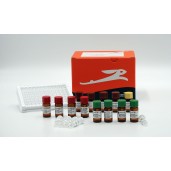
RTS 100 E. coli HY Kit
Package Sizes |
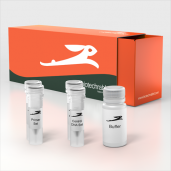
RTS Linear Template Fab Kit
Package Sizes |
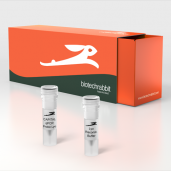
4X CAPITAL™ qPCR Probe Master Mix, lyophilized
Package Sizes |
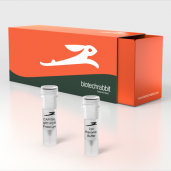
5X CAPITAL™ 1-Step qRT-PCR Probe Master Mix, lyophilized
Package Sizes |
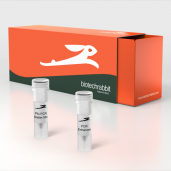
2X Pfu PCR Master Mix
Package Sizes |
